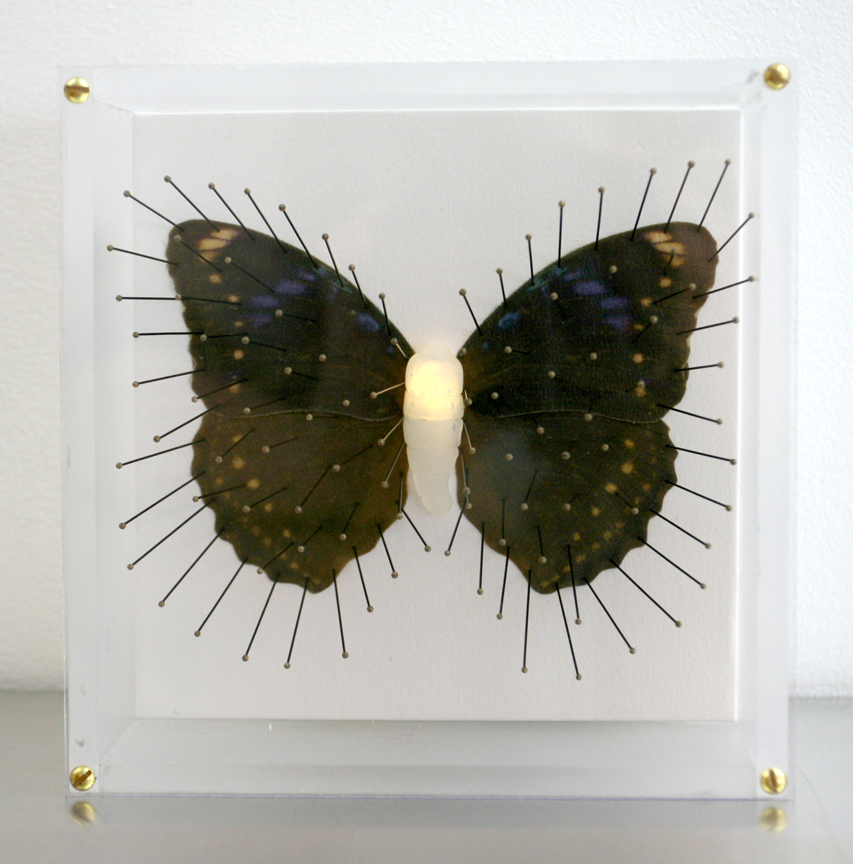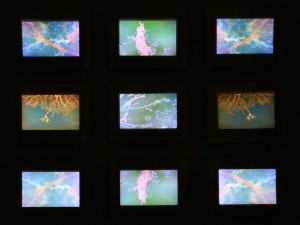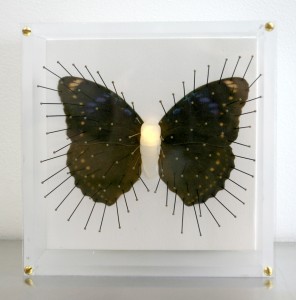Work
Press Release
PATRICIA SWEETOW GALLERY is pleased to present Kim Anno, Professor & Chair of Painting and Drawing at California College of the Arts, San Francisco, in Liquescent, an exhibition of new paintings. We are also honored to debut Gail Wight, Associate Professor of Art at Stanford University in her first exhibition at the gallery. Gail Wight presents Intertidal Zone, an installation with object and video. Exhibition dates are September 10 through October 17, 2009. The artists’ reception is Thursday, September 10, from 5:30 – 7:30 pm. Two illustrated catalogs accompany the exhibitions – Kim Anno, Liquiscent, essay by Tirza Latimer, who is Chair of Visual and Critical Studies at California College of the Arts, San Francisco. She received her PhD in Art History at Stanford University in 2003. Also, Gail Wight, Intertidal Zone, essay by Berin Golonu, who is a doctoral candidate in the Visual and Cultural Studies program at the University of Rochester, NY. She was Associate Curator of Yerba Buena Center for the Arts in San Francisco from 2003 to 2008.
Gail Wight’s installation of Center of Gravity, her video Hydraphilia, and the pinned butterflies Papillons Noirs share the common theme — art and science, or should I say the parody of science through art. Gail Wight, Associate Professor of Art at Stanford University, began her interest in science as a child, evolving toward a path of artistic inquiry in scientific parlance. Although a description of her exhibition at PSG will follow, we thought a more interesting investigation of the artistic process is made by Gail Wight in the following statement:
In attempts to understand thinking I have: made maps of various nervous systems, practiced art while under hypnosis, designed an artificial intelligence to read my Tarot, read for hours to fish, conducted biochemical experiments on myself and others, stolen linen from the Nobel ceremonies in search of laureate DNA, executed medical illustrations on black velvet, documented dissections of humans, dissected machines and failed to put most of them back together, freely made up vocabulary as needed, removed my teeth to model information systems, induced phobias in myself concerning consciousness in the plant kingdom, donated my body to science and then requested it be returned, observed nerve development in vivo, choreographed synaptic responses, translated EEG’s into music, conducted a Cartesian exorcism on myself, and attempted to create cognitive models of my own severely confused state…
– As presented in the essay by Marcia Tanner, Disheveled Neurochemistry: An Irreverent Reverence for Science, for the 2003 Adaline Kent Award Exhibition at the San Francisco Art Institute.
Wight’s confidence in conceiving projects that conflate art and science is just the beginning of her genius. Her humor, elegance of craft, immersion of concept, seduce the unsuspecting viewer into dialogue with hard and soft science, albeit fictionalized science. The supreme hierarchy of investigation required by technology, biology, zoology, psychology and all the -ologies acts as artistic fodder for Wight’s acrobatic, elegant reformulations. Her artistic process mirrors scientific inquiry. However, in contrast to experimental methodology Wight empowers her subjects, creating playful, intelligent environments for them to romp, or grow in. Mimicking the tools, practices and devices used to investigate hypotheses, Wight parodies scientific precepts in subversive, satiric forms. In Mus Musculus: Recursive Mutations, 2003, Wight presented a series of 21 small inkjet prints of the mouse genome. She then purchased mice that proceeded to nibble on the genome inkjet prints. “The implicit notion here,” Wight explains, “is that mice, and by extension other organisms, are perfectly capable of altering their own genetic makeup by themselves, without any help from genetic engineering by humans. They’ve been doing it, literally, for millennia. This piece gives power back to the mouse to mutate its own genome, which mice do with enthusiasm.”
For purposes of our exhibition at PSG, Wight takes a slightly different tack with her projects, Center of Gravity, Hydraphilia, and Papillons Noirs. The installation Center of Gravity is in a dark room. Upon entering, one encounters 8- foot vertically suspended plastic poles, the same size as core samples taken from the earth; only Wight’s core samples are constructed of 8-foot pigment prints, photographs of fragile environments taken on her travels. The images are viewed as though looking through a kaleidoscope. Each 5-inch-diameter pole is lined with one of the photographs, and internally lit. Moving through the various ecosystems the viewer hears recordings indigenous to the area, i.e. coyotes wailing, insects and birds calling. The sheer beauty of the installation belies the fact that as science moves forward to uncover the impact of global warming and human encroachment on fragile environments, those ecosystems are becoming the “disappeared,” the core samples our only link to the nature that once was.
Throughout Wight’s transformed space will be individual Papillons Noirs, butterflies pinned to a sterile white mat board. The small white translucent butterfly bodies pulsate with the fading light of life, while the expanded wings are pinned at 100 points, preventing flight. The extreme hopelessness and desperation of their plight is only exaggerated by their enclosure in a translucent plexi-box, with a transparent lid screwed into place with four delicate brass screws. For Wight, this body of work represents an homage to her uncle who decades ago received a frontal lobotomy, and all those who were the victims of the experiments and spectacle of science.
At the darkest point in the gallery is a multi-channel video installation of flowering slime mold, which Wight has titled Hydraphilia – loosely translated, “love of the many headed monster.”. Wight has videotaped her growing family of molds, carefully feeding them, adding a bit of non-toxic color, and capturing their growth as they respond to the environment in their Petri dishes. As Wight expounds, “An ode to the incredible beauty, color, and growth patterns of the slime mold physarum polycephalum.”
Gail Wight is Associate Professor, Stanford University, Department of Art & Art History, and Director of Graduate Studies in Studio Art, and Experimental Media Arts. Her exhibition history includes many university and museum shows including Rosenberg Gallery, New York University, New York, NY; Berkeley Art Museum, Berkeley, CA; Betty Rymer Gallery, School of the Art Institute, Chicago, IL; Carnegie Mellon University,Pittsburgh, PA; San Jose Museum of Art, San Jose, CA; Ulrich Museum of Art, Wichita State University, Wichita, KS; Cornerhouse, Manchester, England; Lincoln Center, New York, NY; Sol Koffler Gallery, Rhode Island School of Design and Brown University, Providence, RI.
Residencies include Artist-in-Archeology Residence, Stonehenge, Salisbury, UK; SymbioticA Artist-in-Residence, School of Anatomy & Human Biology, University of Western Australia; Rockefeller Foundation Bellagio Center Artist-in- Residence, Como, Italy; Mutter Museum Artist-in-Residence, Philadelphia, PA; The Meaning of Miniscule, Center for Probing the Nanoscale, Stanford University and Art & Technology Center/Albuquerque High Performance Computing Center Artist-in-Residence, Albuquerque, NM.







